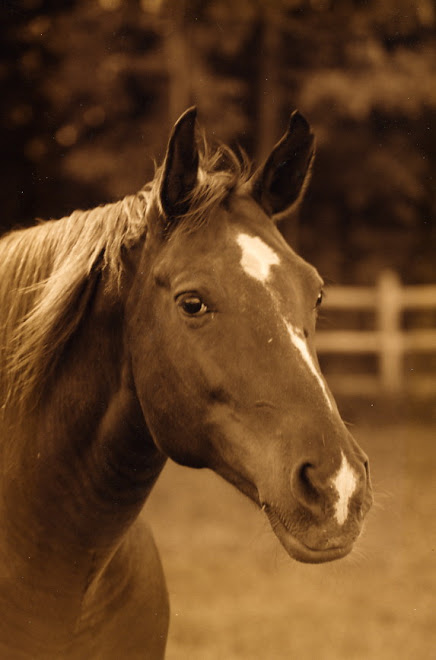|
![]() In 1971 the Wild Free-Roaming Horse and Burro Act was passed by congress to protect all wild horses and burros on public lands. The Bureau of Land Management was given the responsibility to protect, manage and control these wild populations. In order to keep the herds at manageable levels, roundups or gatherings are held periodically. At this time they are counted, branded and examined. Excess animals are offered for adoption to the public, and the rest are returned to the range.
In 1971 the Wild Free-Roaming Horse and Burro Act was passed by congress to protect all wild horses and burros on public lands. The Bureau of Land Management was given the responsibility to protect, manage and control these wild populations. In order to keep the herds at manageable levels, roundups or gatherings are held periodically. At this time they are counted, branded and examined. Excess animals are offered for adoption to the public, and the rest are returned to the range.
![]() In 1977, during one of these gatherings in the remote area of Beatty's Butte, Oregon, a particular kind of horse was discovered. BLM Wild Horse Specialist, E. Ron Harding, while inspecting the herd, noticed that a number of these horses were strikingly similar in color and conformation. Upon closer observation, he ascertained that they carried the primitive markings of the Spanish mustangs. Mr. Harding arranged for these horses to be separated from the rest and held at the Burns district facility in Oregon.
In 1977, during one of these gatherings in the remote area of Beatty's Butte, Oregon, a particular kind of horse was discovered. BLM Wild Horse Specialist, E. Ron Harding, while inspecting the herd, noticed that a number of these horses were strikingly similar in color and conformation. Upon closer observation, he ascertained that they carried the primitive markings of the Spanish mustangs. Mr. Harding arranged for these horses to be separated from the rest and held at the Burns district facility in Oregon.
![]() When the BLM had completed all the gatherings for that year, a suitable area was chosen to release these animals. To prevent losing all the horses to a natural catastrophe, two Herd Management Areas (HMA) were selected in southeastern Oregon. Twenty of the primitively marked horses were released in the Kiger HMA, and seven in the Riddle Mountain HMA.
When the BLM had completed all the gatherings for that year, a suitable area was chosen to release these animals. To prevent losing all the horses to a natural catastrophe, two Herd Management Areas (HMA) were selected in southeastern Oregon. Twenty of the primitively marked horses were released in the Kiger HMA, and seven in the Riddle Mountain HMA.
![]() Kiger Mustangs are an established breed. Spanish markers were found in their blood during genetic testing by the University of Kentucky. They carry the dominant genes which code for the primitive dun factor coloration and markings. Dun factor horses are most commonly identified as duns and grullas. Dun factor markings include: dorsal stripe, jack stripe, zebra stripes on legs, arm bars, bicolored mane and tail, ears with dark outline and fawn colored interior, facial mask and cobwebbing.
Kiger Mustangs are an established breed. Spanish markers were found in their blood during genetic testing by the University of Kentucky. They carry the dominant genes which code for the primitive dun factor coloration and markings. Dun factor horses are most commonly identified as duns and grullas. Dun factor markings include: dorsal stripe, jack stripe, zebra stripes on legs, arm bars, bicolored mane and tail, ears with dark outline and fawn colored interior, facial mask and cobwebbing.
![]() The Kiger Mustang is slightly smaller than most breeds. The ears are finely pointed and slightly hooked at the tip. The head displays a broad, flat forehead, wide, prominent eyes and fine muzzle. The body conformation of the Kiger is distinctive, with chest of good depth and width, and the back short, broad and well muscled. Dense bone, compact hooves and a well-crested neck round out this unique horse.
The Kiger Mustang is slightly smaller than most breeds. The ears are finely pointed and slightly hooked at the tip. The head displays a broad, flat forehead, wide, prominent eyes and fine muzzle. The body conformation of the Kiger is distinctive, with chest of good depth and width, and the back short, broad and well muscled. Dense bone, compact hooves and a well-crested neck round out this unique horse.
Roberta Isley
KMA Historian
r.isley@charter.net



 Click Here to Purchase
Click Here to Purchase








I have some people not far from me that raise Kigers. They are really nice horses, love the mustangs.
ReplyDeleteWhat an impressive and incredible horse, and what a history! Lots of stuff I just never knew....!
ReplyDeleteIntriguing history!
ReplyDelete